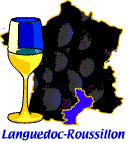Vins de Pays
Created | Updated Jan 28, 2002

No matter how you describe them, there is no getting away from the fact that Vins de Pays taste good; and, at very palatable prices, it is little wonder that they are fast becoming standard features on the dining tables in Europe.
Wine buffs, like computer-philes, insist on talking in riddles, almost certainly to keep us ordinary mortals in the dark. But now there is no longer any reason to know what a balanced nose or good legs mean, in order to keep up with the well informed. For one of the most popular wines around these days needs no special expertise to be appreciated... Vins de Pays.
These are modern, down to earth products, which have achieved the magic combination of being both good on the palate and good on the wallet. Pronounced "Van-de pay-ee", these modern wines are described as having "character and quality, without excessive pretentions".
Gone are the days when reasonably-priced wines were referred to as "plonk" by the Brits, "piquette" by the French, "gesöff" by the German and "billigt och blaskigt" by the Swedes.
So, what is Vin de Pays? Simply translated it means "local or regional wine". They have been an established part of French wine making tradition for years, but it was not until 1968 that they were given their own official category; and their popularity has increased ever since. Today they are manufactured with modern methods and equipment, according to strictly-controlled standards.
They might be single grape wines. Chardonnay or Sauvignon blanc grapes are most famous for white wines; and Merlot and Cabernet Sauvignon for the reds.
The biggest wine district is Languedoc-Roussillon, producing 70% of Vins de Pays.
"Salut et à votre santé!"

